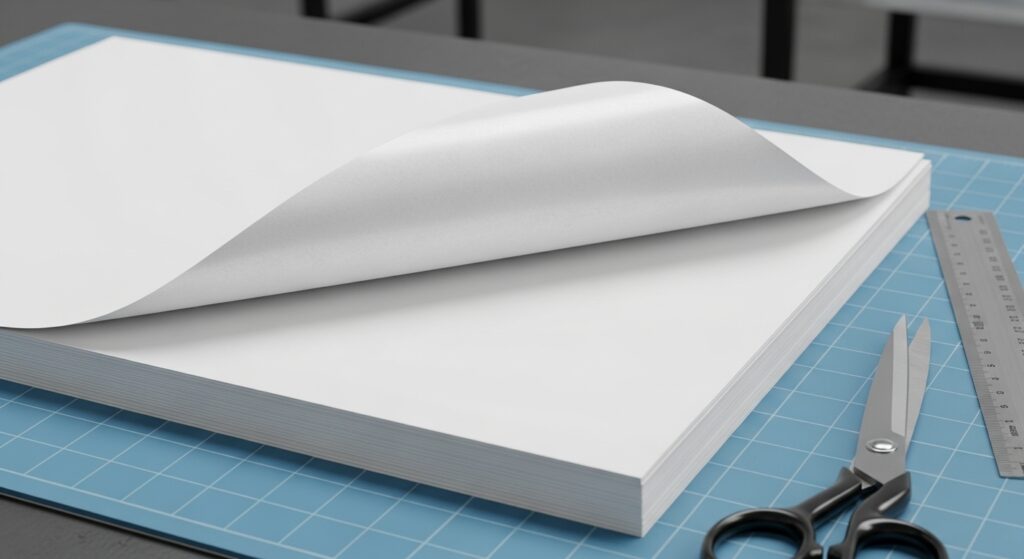In today’s visually driven world, creativity and technology intersect more closely than ever before. Whether you’re customizing apparel, designing home décor, or personalizing promotional products, the tools behind the art are as essential as the creativity itself. Among these, sublimation paper stands out as a quiet yet powerful innovation—an indispensable medium that transforms digital designs into lasting, vibrant realities.
This article explores the science, versatility, and growing influence of sublimation paper, and how it continues to shape industries that thrive on precision, quality, and imagination.
What Is Sublimation Paper?
At its core, sublimation paper is a specially coated medium designed to transfer printed images onto various materials—most commonly polyester fabrics, ceramics, and coated substrates. The magic lies in its chemistry: when exposed to heat and pressure, sublimation ink turns from solid to gas without becoming liquid, bonding permanently with the material’s surface.
Unlike traditional printing methods that apply ink on top of a surface, sublimation infuses the design into the substrate, ensuring images that are vivid, durable, and resistant to fading or peeling. This process has made sublimation paper a cornerstone of industries ranging from sportswear production to custom merchandise printing.
The Science Behind Sublimation Paper
The effectiveness of sublimation paper relies heavily on its coating—a layer that controls how sublimation ink is absorbed, retained, and released during heat transfer. This specialized coating ensures:
-
High Ink Retention: The paper holds sublimation ink effectively until it’s transferred, minimizing smudging or color loss.
-
Even Ink Release: During heat pressing, the coating releases ink consistently for sharp, detailed prints.
-
Optimal Drying Time: Quick-drying properties prevent bleeding and ghosting, even during high-volume production.
Essentially, sublimation paper acts as a bridge between creativity and precision. Its role may seem simple, but without it, the vibrant clarity of modern sublimation printing would be impossible to achieve.
Why Sublimation Paper Matters
While it might appear like just another printing accessory, sublimation paper plays a crucial role in quality and consistency. In professional design and manufacturing environments, even the smallest imperfections can impact customer satisfaction. Reliable paper ensures every print maintains accurate color reproduction and sharpness.
Key benefits include:
-
Vibrant Color Output: The paper’s coating ensures deep, saturated tones ideal for photographic prints and designs.
-
Durability: The transferred image becomes part of the surface, making it resistant to cracking, washing, or scratching.
-
Versatility: Suitable for fabrics, mugs, phone cases, aluminum sheets, and more.
-
Efficiency: Consistent ink transfer minimizes waste and maximizes productivity.
For businesses, artists, and crafters alike, sublimation paper transforms digital creativity into tangible artistry.
Applications Across Industries
The versatility of sublimation paper extends across countless sectors, each benefiting from its precision and adaptability:
1. Fashion and Apparel:
From personalized t-shirts to high-performance sportswear, sublimation ensures seamless, all-over prints that remain breathable and vibrant.
2. Home Décor:
Designers use sublimation paper to customize items like cushions, curtains, and wall art, allowing endless creative freedom.
3. Promotional Products:
Brands rely on sublimation for mugs, mouse pads, tote bags, and more—ensuring long-lasting promotional impact.
4. Photography and Art Prints:
Sublimation’s sharp detail and color fidelity make it ideal for artistic reproductions and personalized gifts.
5. Industrial and Signage Printing:
Durable sublimated designs stand up to outdoor exposure and heavy use, making them ideal for signage, displays, and specialty products.
This wide range of applications showcases sublimation paper’s unique ability to blend creativity with functionality.
The Evolution of Sublimation Paper Technology
Like many modern tools, sublimation paper has evolved alongside advancements in materials science and printing technology. Early versions often struggled with uneven ink absorption and poor color release. Today, improved coatings and fiber technologies have revolutionized performance.
Modern sublimation paper varieties now offer:
-
High-Speed Printing Compatibility: Designed for industrial printers with rapid ink delivery systems.
-
Eco-Friendly Materials: Reduced environmental footprint through biodegradable coatings and sustainable pulp sources.
-
Enhanced Transfer Rates: Higher ink-release efficiency reduces waste and enhances productivity.
-
Custom Paper Grades: Different weights and coatings optimized for textiles, ceramics, or rigid substrates.
These innovations have positioned sublimation as one of the most reliable and sustainable printing methods available.
Sustainability and the Future of Printing
As industries move toward greener production, sublimation paper plays a surprisingly significant role in promoting sustainability. Compared to traditional screen printing or solvent-based methods, sublimation generates minimal waste, requires no water, and uses less energy.
Moreover, manufacturers are developing recyclable or FSC-certified papers that reduce environmental impact without sacrificing quality. When paired with water-based sublimation inks, the process becomes one of the most eco-friendly in the printing industry.
This alignment of creativity and sustainability underscores a larger trend—where innovation serves both artistry and the planet.
Choosing the Right Sublimation Paper
Not all sublimation papers are created equal. Selecting the right one depends on your equipment, substrate, and project goals. Factors to consider include:
-
Paper Weight: Heavier papers (around 100g/m²) are ideal for fabrics, while lighter ones work better for rigid surfaces.
-
Coating Quality: Determines how well ink is held and released; premium coatings yield brighter, sharper prints.
-
Printer Compatibility: Always match paper type with your sublimation printer and ink brand for optimal results.
-
Drying Speed: Important for high-output operations to prevent smudging or ghosting.
Professional creators often experiment with different brands and coatings to achieve the perfect balance between vibrancy, speed, and efficiency.
The Art of Precision and Patience
While technology powers sublimation, artistry drives it. The process of preparing designs, printing, aligning, and transferring requires a combination of precision and creativity. Sublimation paper acts as the silent partner in this process—facilitating flawless transfers that bring imagination to life.
For designers, each project is an opportunity to blend craftsmanship with innovation. Whether producing limited-edition art prints or large-scale product lines, sublimation offers both creative freedom and commercial reliability.
Challenges and Opportunities in the Market
Like any specialized medium, sublimation paper faces challenges, particularly as demand surges across creative industries. These include:
-
Price competition: With growing popularity, cheaper alternatives can compromise quality.
-
Counterfeit products: Low-grade papers can lead to poor transfers and ink waste.
-
Sustainability expectations: Consumers increasingly prefer eco-conscious brands and products.
However, these challenges also spark innovation. Industry leaders are continuously improving paper formulas, refining recyclability, and expanding compatibility to ensure consistent, high-performance results.
The future of sublimation paper lies not just in production efficiency, but in enabling creators to work smarter, cleaner, and more imaginatively.
Looking Ahead
As technology continues to advance, sublimation printing—and the paper that powers it—will play a central role in the customization revolution. From small creative studios to global manufacturing hubs, sublimation paper will remain the foundation of vibrant, high-quality design.
In an age that values personalization, sustainability, and quality, sublimation paper stands as a reminder that true innovation often hides in plain sight. It’s not just about ink and heat—it’s about imagination made visible.






